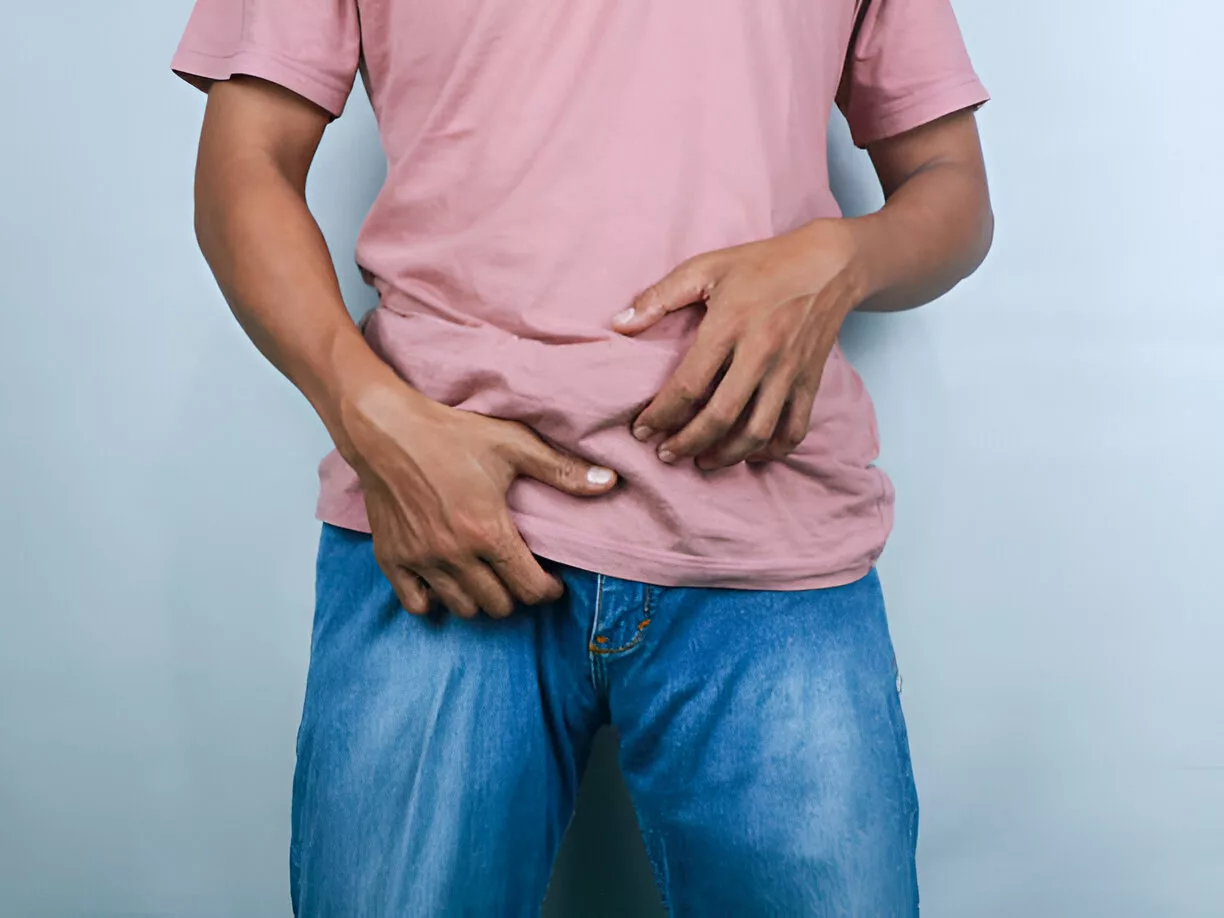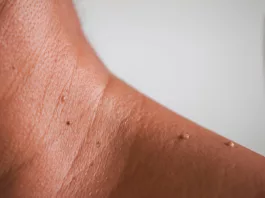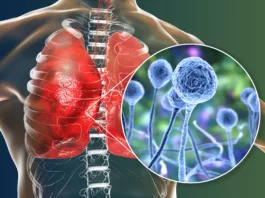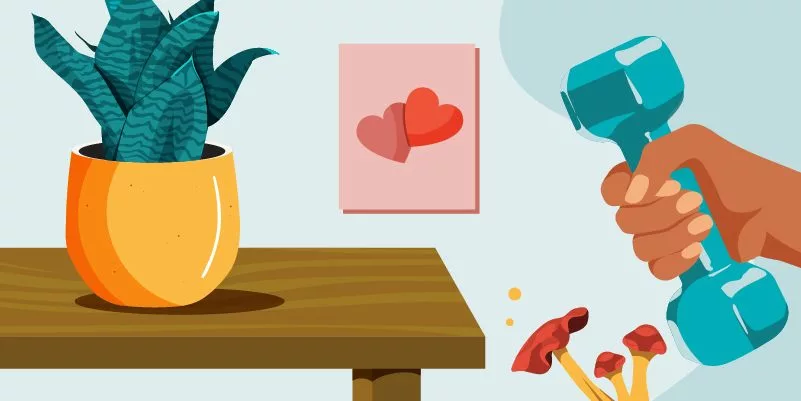Jock itch, medically known as tinea cruris, is an infectious skin condition caused by fungi. It usually affects your groin and buttocks and is marked by an itchy, red rash that can spread from person to person. Though not serious, it can cause persistent discomfort without proper treatment.
What is Jock Itch?
Jock itch has been recognized for centuries, but its fungal origin was not fully understood until the late 19th and early 20th centuries. It is a skin infection that affects warm, damp areas like your groin, inner thighs, and buttocks. Jock itch is caused by dermatophytes, a type of fungus that thrives in moisture and spreads easily. The infection leads to redness, itching, and a scaly rash. Other names for jock itch include:
- Tinea cruris
- Jock rot
- Dhobi itch
- Crotch itch
- Scrot rot
- Gym itch
- Ringworm of the groin
- Eczema marginatum1Tinea Infections (Ringworm). (2024, October 2). Hopkinsmedicine.org. https://www.hopkinsmedicine.org/health/conditions-and-diseases/tinea-infections-ringworm
What causes Jock Itch?
Jock itch happens when fungi called dermatophytes infect your skin. Three main types of dermatophytes cause jock itch:
- Trichophyton rubrum is the most common cause of jock itch worldwide. It spreads easily from person to person and can persist on clothing, towels, and locker room surfaces.
- Trichophyton mentagrophytes is often linked to more aggressive infections. It can cause a more inflamed, itchy rash and is commonly spread through animals, contaminated floors, and direct contact.
- Epidermophyton floccosum is less common but still causes jock itch.
When fungi get on your skin, they attack the keratin present in it — the protein that forms its outer layer. This damages your skin’s defenses and leads to the red, itchy rash of jock itch. The infection thrives in areas where your skin folds or rubs together, like your groin and inner thighs, because these spots stay warm and damp. If your skin stays sweaty or moist for too long, the fungus grows even faster. Changes in your skin’s natural balance can also make it easier for the infection to spread.2Dermatophytosis in patients with human immunodeficiency virus infection: Clinical aspects and etiologic agents. (2015). Acta Tropica, 150, 111–115. https://doi.org/10.1016/j.actatropica.2015.07.012
Is Jock Itch contagious?
Jock itch is considered mild to moderately contagious. Its causative fungi can easily transfer from one person to another and spread to different body parts. Jock itch transmission can occur through different modes, such as:
Direct Contact:
Jock itch spreads when your skin touches an infected person’s skin. This usually happens in warm, sweaty conditions, like during sports or other physical activities.
Indirect Contact:
You can get jock itch by using personal items that have the fungus on them. Towels, underwear, clothes, and razors are common ways the infection spreads.
Fomites:
Fungi can live on objects and surfaces for a long time. Gym equipment, locker room floors, shower stalls, and shared seats can all carry the fungus and pass it to your skin.
Autoinoculation:
If you already have a fungal infection, like athlete’s foot, touching or scratching that area can move the fungus to your groin. Wearing the same socks and underwear without washing your hands first can also spread the fungus to your groin and buttocks.
What are the risk factors of Jock Itch?
Some factors make you more likely to get jock itch by creating the perfect conditions for fungi to grow and spread. If you understand these risks, you can take steps to prevent the infection.
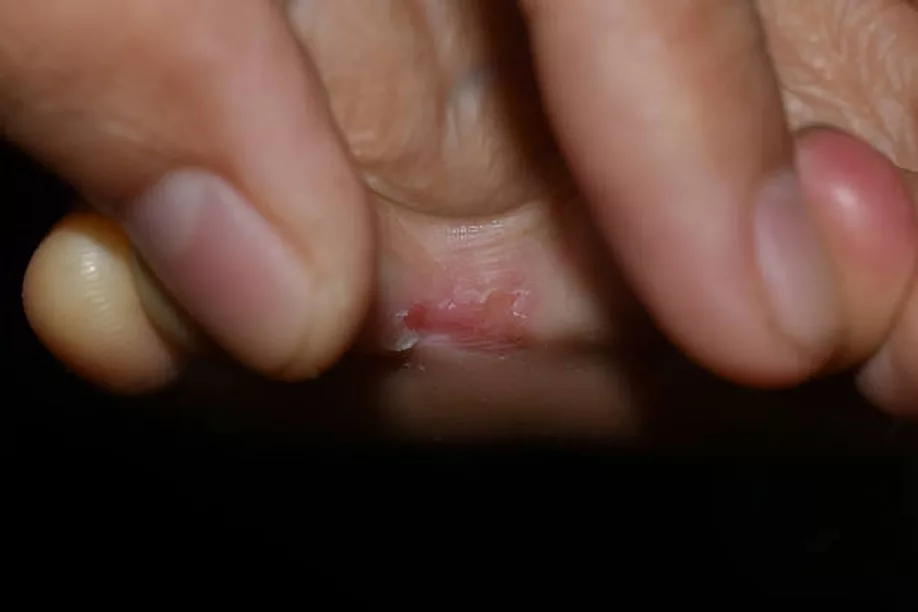
Excessive Sweating:
When your skin stays damp for too long, fungi have a better chance of growing. If you sweat a lot, especially in the groin, inner thighs, or buttocks, the warmth and moisture trapped there can lead to an infection.
Tight Clothing:
Wearing tight underwear, synthetic fabrics, or sports gear traps heat and moisture against your skin. If your skin stays too warm and damp, fungi can multiply more easily.
Poor Hygiene:
Not washing your groin area regularly or staying in sweaty clothes for too long creates the perfect environment for fungi. If you don’t keep your skin clean, your risk of infection goes up.
Sharing Personal Items:
Using someone else’s towels, clothes, or razors can spread the fungus. If an infected person’s belongings touch your skin, you might pick up the infection without realizing it.
Diabetes:
High blood sugar levels weaken your body’s ability to fight infections. If you have diabetes, jock itch may last longer or be harder to treat.
Weakened Immune System:
If your immune system is weak due to illnesses like HIV, cancer, or long-term steroid use, your body struggles to keep fungi under control. Just like diabetes, it makes jock itch more frequent and harder to get rid of.
Genetic Susceptibility:
Some people are naturally more likely to get fungal infections. If your close family members often deal with jock itch or athlete’s foot, you might be at higher risk too.
Poor Living Conditions:
Not having clean water, proper hygiene, and medical care increases the risk of jock itch. If you live in a crowded space where people share clothing and towels, the infection can spread more easily.
Skin-to-Skin Contact:
Jock itch spreads easily through direct contact with someone who has it. If your skin touches an infected person’s skin, the fungus can transfer to you and start growing.
Being an Athlete:
Athletes, especially those in contact sports like wrestling and football, are more likely to get this infection. If you spend time in sweaty locker rooms, use shared equipment, or have frequent skin-to-skin contact with other sweaty athletes, your chances of infection increase.3Aaron, D. M. (2023, September 5). Tinea Cruris (Jock Itch). MSD Manual Professional Edition; MSD Manuals. https://www.msdmanuals.com/professional/dermatologic-disorders/fungal-skin-infections/tinea-cruris-jock-itch
Signs & Symptoms of Jock Itch
This infection causes a distinct rash in the groin area. You may feel intense itching that can spread from your groin to the anus. Common signs include a red, raised rash with a clear, scaly border, usually appearing on the upper inner thighs:
- The rash may blister, peel, or crack. It can also spread close to the anus. Jock itch rash often affects both sides of your groin.
- The affected skin may look red, tan, or brown and have a shiny, flaky, or rippled texture. The center appears lighter in color.
- Jock itch may cause your hair follicles to become inflamed. It can cause small bumps, especially in hairy areas.
- In men, the rash may extend to the scrotum, while in women, it can spread to the outer genital areas. However, the penis is usually unaffected unless steroids are used or your immunity is weak.4 Bachmeyer, C., & Buot, G. (2012). Tinea corporis in a mixed martial arts fighter. Canadian Medical Association Journal, 185(10), 897–897. https://doi.org/10.1503/cmaj.120813
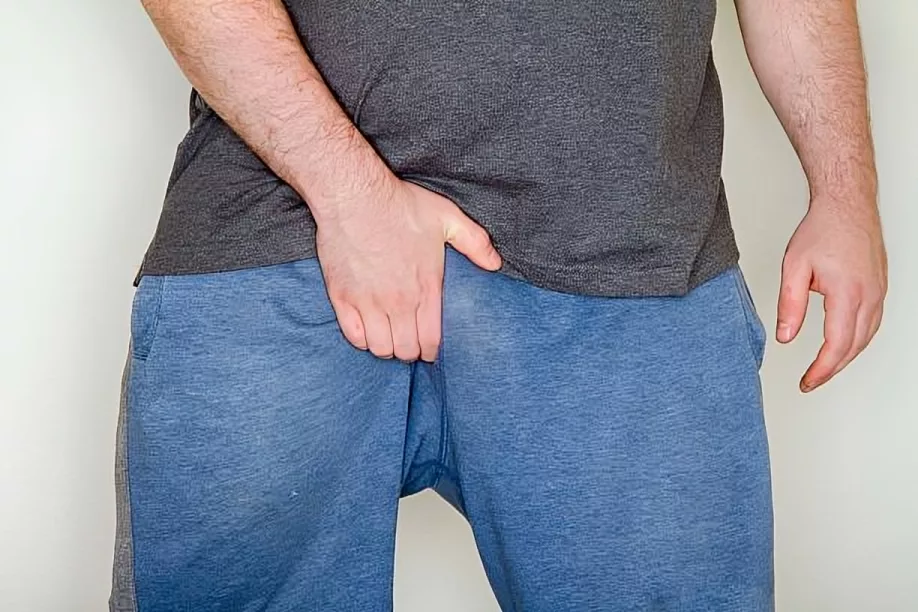
How is Jock Itch diagnosed?
Most of the time, your doctor can diagnose this infection just by looking at it. But if your rash is unusual, keeps coming back, or doesn’t respond to treatment, they might run some tests.
History & Physical Examination:
When diagnosing jock itch, your doctor will first ask about your symptoms, such as constant itching, burning, and discomfort in your groin. They will want to know how long you’ve had the rash, if you’ve had it before, and whether you’ve noticed similar infections on other parts of your body.
Your medical history is also important, especially if you have conditions like diabetes or a weakened immune system. They will also take your lifestyle habits into account — excessive sweating, poor hygiene, playing sports, and tight clothing can put you at further risk.
During the physical exam, your doctor will examine your groin and thighs for a rash with a raised border and a clearer center, which is a common sign of jock itch.
Investigations:
Doctors use laboratory investigations to confirm the diagnosis of jock itch. These tests help make sure you get the right treatment for your infection, such as:
- A potassium hydroxide test is a quick way to check for fungi—your doctor will scrape a small skin sample and look at it under a microscope.
- If needed, a fungal culture can identify the exact fungus causing your infection.
- In rare cases, a skin biopsy with PAS staining may be done to confirm the diagnosis.5Leung, A. K., Lam, J. M., Leong, K. F., & Hon, K. L. (2020). Tinea corporis: an updated review. Drugs in Context, 9, 1–12. https://doi.org/10.7573/dic.2020-5-6
Treatment for Jock Itch
This infection is usually treated with antifungal agents which get rid of fungi through a variety of mechanisms. Most times, ointments and creams are enough. Oral drugs are used for more severe cases. Steroid use is avoided.
Topical Antifungal Drugs:
The first-line treatment for jock itch is topical antifungal creams, which help eliminate the fungus by targeting ergosterol, which is a key component of fungal cell membranes.
- Allylamines (terbinafine, butenafine, naftifine) often work faster and have lower relapse rates.
- Azoles (clotrimazole, miconazole, ketoconazole, oxiconazole, sulconazole, econazole) are more affordable but may require longer treatment durations.
- Ciclopirox olamine is a lesser-used antifungal that can be effective in some cases.
Most topical antifungals are applied once or twice daily for 2 to 4 weeks. Some newer options, like luliconazole, require just one application per day for a week.
Oral Antifungal Drugs:
For severe, chronic, and/or recurrent jock itch, oral antifungals may be needed. These are also recommended if the infection has spread widely or if you have a weakened immune system. The most commonly prescribed oral antifungal drugs include:
- Terbinafine and Itraconazole are preferred due to their strong skin penetration and minimal drug interactions.
- Fluconazole is considered, but is not ideal due to its poor keratin adherence and longer treatment time. If you stop medication too early or skip doses, it can allow the infection to return.
- Griseofulvin is more commonly used for scalp infections rather than jock itch.
- Ketoconazole can be used, but is no longer recommended because of the risk of liver damage.
Even if oral antifungals are prescribed, topical treatments can still be used alongside them for better results.
Antibiotics:
Sometimes, this infection can lead to bacterial infections due to scratching and skin breakdown. If this happens, topical or oral antibiotics may be needed.6Khurana, A., Sardana, K., & Chowdhary, A. (2019). Antifungal resistance in dermatophytes: Recent trends and therapeutic implications. Fungal Genetics and Biology, 132, 103255–103255. https://doi.org/10.1016/j.fgb.2019.103255
What causes Jock Itch treatment to fail?
The treatment can sometimes fail to work. This causes various complications and great discomfort. Some of the reasons why this happens include:
- Sharing belongings with someone infected can transfer the fungus back to you, making it hard to get rid of the infection. The fungus can also spread from one body part to another.
- Some fungi are harder to treat and resistant to standard antifungals.
- Jock itch can often get mistaken for other skin disorders such as eczema or psoriasis. This leads to the wrong treatment.7Sahoo, A. K., & Mahajan, R. (2016). Management of tinea corporis, tinea cruris, and tinea pedis: A comprehensive review. Indian Dermatology Online Journal, 7(2), 77. https://doi.org/10.4103/2229-5178.178099
What you need to know about Jock Itch healing stages?
Jock itch goes through different stages as it heals. These stages of healing include:
| Stage | What Happens | Symptoms | Healing Progress | What to Do |
| Stage 1: Active Infection | The fungus is growing and spreading. | Itchy, red, burning rash. It may be ring-shaped, cracked, or sore. | Symptoms may get worse if untreated. The rash spreads. | Start antifungal treatment. Keep the area clean and dry. |
| Stage 2: Treatment Begins | Medicine starts working. | Rash, itching, and redness slowly improve. | During week 1, the itching may still be strong. Between weeks 2 and 4, the rash fades, and your skin may peel. After 4 weeks, most cases heal. | Keep using antifungal medicine. Don’t stop too early. |
| Stage 3: Continued Improvements | Skin heals but may look different. | Some dark or light patches remain. | Skin gets better but may take months to fully return to normal. | Stay clean, wear loose clothes, and avoid moisture. |
| Stage 4: Full Healing | The infection is gone. | No rash or itching. | Skin looks healthy again. | Keep good hygiene to prevent it from coming back. |
| Stage 5No Longer Contagious | Infection can’t spread anymore. | No active symptoms, but fungus may still be on the skin. | With treatment, jock itch usually stops being contagious after 2–3 days. Without treatment, it may remain contagious up to 7–10 days after visible healing. | Finish all medicine. Don’t share towels or clothes. |
Complications of Jock Itch
Jock itch is usually mild, but without proper management, it can lead to more serious problems. These complications include:
- Jock itch can come back if you do not complete the full treatment or if the infection spreads from other areas.
- Bacterial infections may develop if the skin breaks due to scratching.
- Steroid creams can hide symptoms, making it harder for doctors to diagnose the infection.
- In some cases, the infection may go deeper into the skin, causing a more serious condition called Majocchi’s granuloma.8Trocoli Drakensjö I, Vassilaki I, Bradley M. Majocchis Granuloma Caused by Trichophyton mentagrophytes in 2 Immunocompetent Patients. Actas Dermosifiliogr. 2017 Jan-Feb;108(1):e6-e8.
- You may develop an allergic reaction, leading to rashes on other parts of your body.
How to prevent Jock Itch?
Simple habits can make a big difference in preventing infection. You can lower your risk of this infection by:
- Wash your groin and inner thighs daily with soap and water.
- Dry the area completely before putting on clothes.
- Wear loose, breathable underwear made of cotton.
- Change out of sweaty clothes as soon as possible.
- Avoid sharing towels, clothing, or razors.
- Use antifungal powder if you sweat a lot.
- Treat athlete’s foot quickly to prevent spreading the fungus to your groin.
Jock Itch Vs Herpes
Jock itch and herpes both affect the groin but have different causes. The jock itch is a fungal infection, while herpes comes from a virus. It causes a red, scaly rash with clear borders, while herpes leads to painful blisters that turn into sores. This infection mostly itches, but herpes can burn or sting. You can get herpes from direct skin contact, while it spreads through infected items or sweaty skin contact. Antifungal creams can cure jock itch, but herpes needs antiviral medicine since it stays in the body and can come back.
Conclusion
Jock itch happens when fungi grow on your skin, especially in warm, moist areas like your groin and buttocks. It results in an itchy red rash, which is uncomfortable and may spread if left untreated. This infection spreads through direct contact with an infected person or through sharing personal items like towels or clothes. Sweating, tight clothing, and poor hygiene can make it worse. While it is rarely serious, it can be complicated if not properly treated.
Refrences
- 1Tinea Infections (Ringworm). (2024, October 2). Hopkinsmedicine.org. https://www.hopkinsmedicine.org/health/conditions-and-diseases/tinea-infections-ringworm
- 2Dermatophytosis in patients with human immunodeficiency virus infection: Clinical aspects and etiologic agents. (2015). Acta Tropica, 150, 111–115. https://doi.org/10.1016/j.actatropica.2015.07.012
- 3Aaron, D. M. (2023, September 5). Tinea Cruris (Jock Itch). MSD Manual Professional Edition; MSD Manuals. https://www.msdmanuals.com/professional/dermatologic-disorders/fungal-skin-infections/tinea-cruris-jock-itch
- 4Bachmeyer, C., & Buot, G. (2012). Tinea corporis in a mixed martial arts fighter. Canadian Medical Association Journal, 185(10), 897–897. https://doi.org/10.1503/cmaj.120813
- 5Leung, A. K., Lam, J. M., Leong, K. F., & Hon, K. L. (2020). Tinea corporis: an updated review. Drugs in Context, 9, 1–12. https://doi.org/10.7573/dic.2020-5-6
- 6Khurana, A., Sardana, K., & Chowdhary, A. (2019). Antifungal resistance in dermatophytes: Recent trends and therapeutic implications. Fungal Genetics and Biology, 132, 103255–103255. https://doi.org/10.1016/j.fgb.2019.103255
- 7Sahoo, A. K., & Mahajan, R. (2016). Management of tinea corporis, tinea cruris, and tinea pedis: A comprehensive review. Indian Dermatology Online Journal, 7(2), 77. https://doi.org/10.4103/2229-5178.178099
- 8Trocoli Drakensjö I, Vassilaki I, Bradley M. Majocchis Granuloma Caused by Trichophyton mentagrophytes in 2 Immunocompetent Patients. Actas Dermosifiliogr. 2017 Jan-Feb;108(1):e6-e8.

